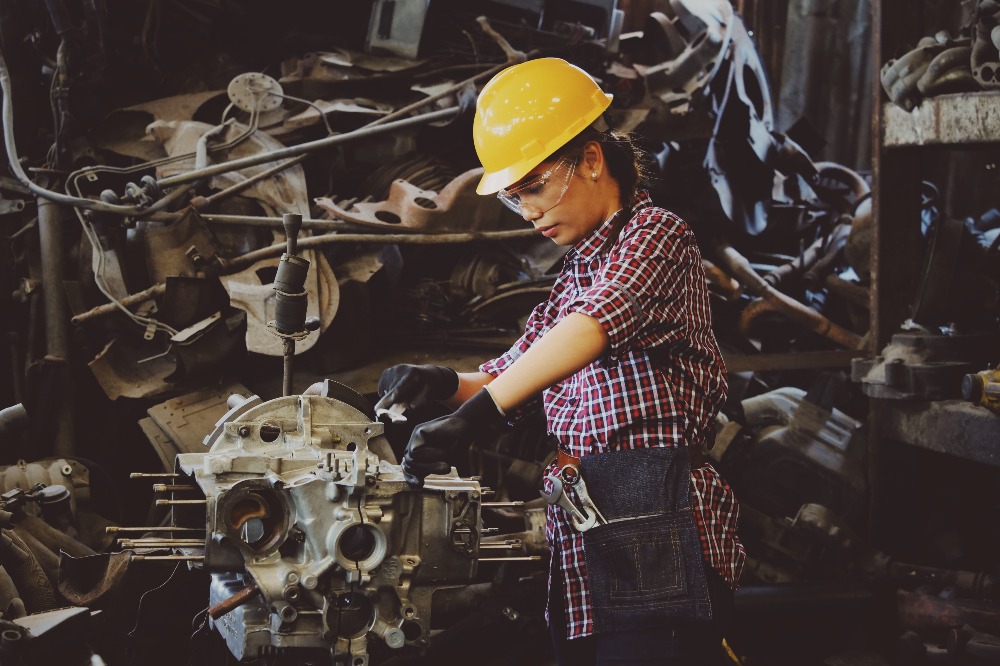Manual assembly lines generally use a mechanized transfer system to maneuver parts between workstations, but the stations themselves are operated by human workers.
An automated line consists of automated workstations connected by a parts transfer system that’s coordinated with the stations. Within the ideal, no human workers are on the road, except to perform auxiliary functions like tool changing, loading and unloading parts at the start and end of the road, and repair and maintenance activities. Modern automated lines are highly integrated systems, operating under computer control.
The rationale is that simpler tasks are easier to automate. Operations that are difficult to automate are those requiring multiple steps, judgment, or human sensory capability. Tasks that are easy to automate comprises single work elements, quick actuating motions, and straight-line feed motions as in machining.
AUTOMATED PRODUCTION LINES
Automated production lines is divided into two basic categories: (1) those who perform processing operations like machining, and (2) those who perform assembly operations. A very important type within the processing category is that the transfer line.
TRANSFER LINES AND SIMILAR PROCESSING SYSTEMS
A transfer line consists of a sequence of workstations that perform production operations, with automatic transfer of labor units between stations. Machining is that the most typical processing operation. Automatic transfer systems for sheet metalworking and assembly are available. Within the case of machining, the workpiece typically starts as a metal casting or forging, and a series of machining operations are performed to accomplish the high-precision details (e.g., holes, threads, and finished flat surfaces).
Transfer lines are usually expensive pieces of kit, sometimes costing millions of dollars; they’re designed for top part quantities. The number of machining accomplished on the work part is usually significant, but since the work is split among many stations, production rates are high and unit costs are low compared to alternative production methods. Synchronous transfer of labor units between stations is often used on automated machining lines. A variation of the automated transfer line is that the dial indexing machine, within which workstations are arranged around a circular worktable, called a dial. The quantity of rotational positions is meant to match the quantity of workstations round the periphery of the table. Although the configuration of a dial-indexing machine is sort of different from a transfer line, its operation and application are quite similar.
Automated Assembly Systems
Automated assembly systems incorporate one or more workstations that perform assembly operations, like adding components and/or affixing them to the energy unit. Automated assembly systems are often divided into single station cells and multiple station systems. Single station assembly cells are often organized around an industrial robot that has been programmed to perform a sequence of assembly steps. The robot cannot work as fast as a series of specialized automatic stations, so single station cells are used for jobs within the medium production range.
Multiple station assembly systems are appropriate for top production. They are widely used for production of small products like ball-point pens, cigarette lighters, flashlights, and similar items consisting of a limited number of components.
The number of components and assembly steps is restricted because system reliability decreases rapidly with increasing complexity.
The in-line configuration is that the conventional transfer line adapted to perform assembly work. These systems don’t seem to be as massive as their machining counterparts. Rotary systems are usually implemented as dial indexing machines. Carousel assembly systems are arranged as a loop. They can be designed with a greater number of workstations than a rotary system. Owing to the loop configuration, the carousel allows the work carriers to be automatically returned to the place to begin for reuse, a plus shared with rotary systems but not with transfer lines unless provision for his or her return is created within the design.
Line balancing could be a problem on an automatic line, even as it’s on a manual production line. the overall work content must be allocated to individual workstations. However, since the tasks assigned to automated stations are generally simpler, and therefore the line often contains fewer stations, the matter of defining what work should be done at each station isn’t as difficult for an automatic line as for a manual line.
A more significant problem in automated lines is reliability. The road consists of multiple stations, interconnected by a piece transfer system. It operates as an integrated system, and when one station malfunctions, the whole system is adversely affected. to investigate the operation of an automatic line, assume a system that performs processing operations and uses synchronous transfer. This model includes transfer lines additionally as dial indexing machines. It doesn’t include automated assembly systems, which require an adaptation of the model. The terminology will borrow symbols from the first two sections: n number of workstations on the line; Tc ideal cycle time on the line; Tr repositioning time, called the transfer time during a transfer line; and Tsi the service time at station i.
The cost of operating an automatic line is that the investment cost of the equipment and installation, plus the value of maintenance, utilities, and labor assigned to the road. These costs are converted to a similar uniform annual cost and divided by the quantity of hours of operation each year to produce an hourly rate.
